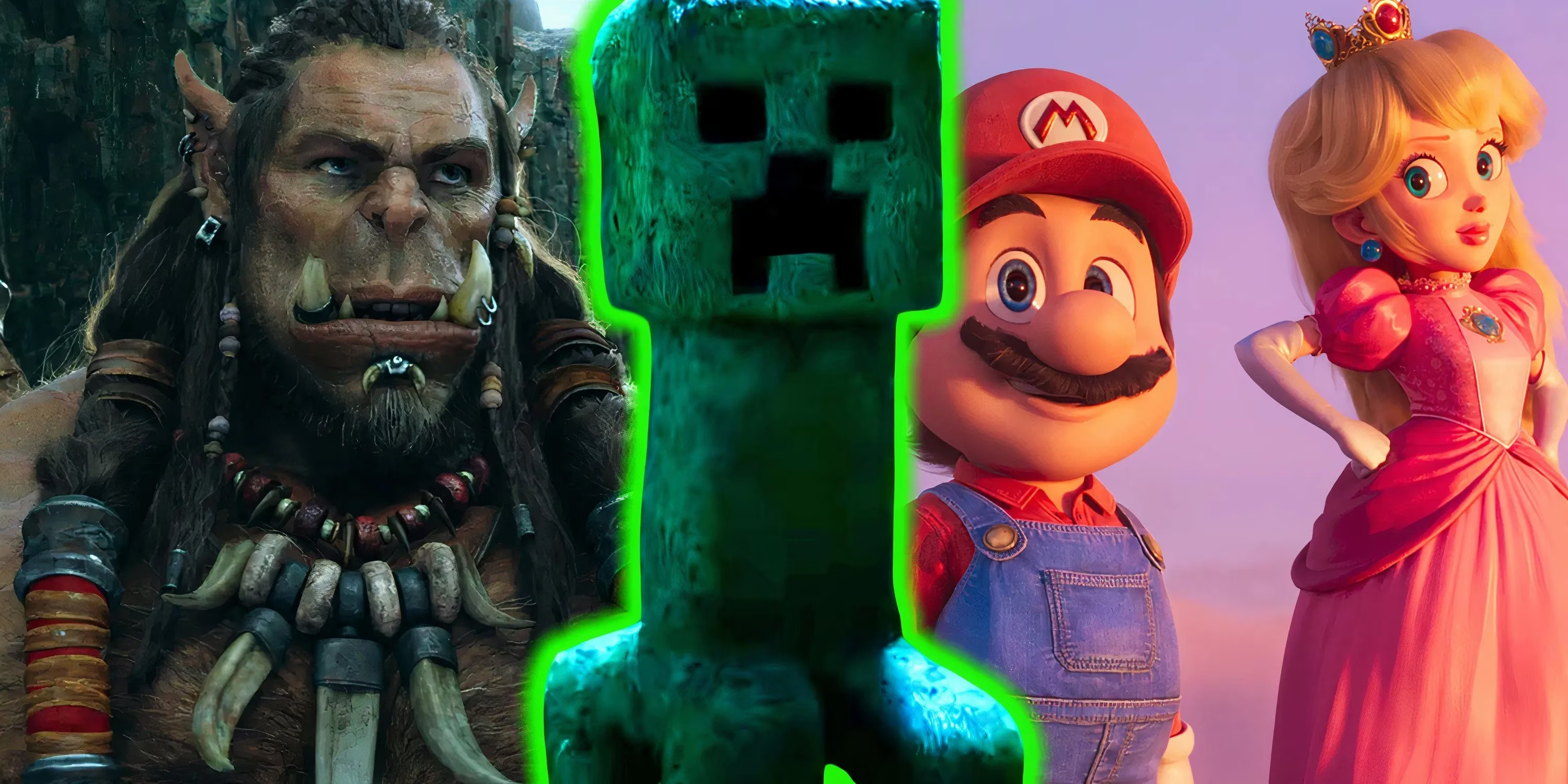When Game Visuals Leap to Screen: Movies That Nailed the Pixel-Perfect Look
Explore how faithful and visually stunning video game adaptations like Angry Birds, Five Nights at Freddy’s, Silent Hill, and Minecraft captivate fans with authentic, eye-popping visuals.

Turning video games into blockbuster movies has always been a high-stakes gamble – like trying to parallel park a tank during rush hour. Get the visuals wrong, and you’ll face the wrath of millions of fans armed with pitchforks (or at least angry tweets). But when filmmakers actually listen to the source material? Magic happens. From orcs that look ripped straight from Azeroth to creepers that’d give any Minecraft veteran PTSD, these adaptations didn’t just phone it in – they delivered eye candy so authentic, you’d swear your controller vibrated.
🎮 1. The Angry Birds Movie: Feathers and Fury in 3D
Who knew hurling temperamental fowl at smug green pigs could become a legit cinematic universe? Against all odds, this mobile game turned animated flick made it work by keeping designs freakishly faithful. Red’s permanent scowl? Check. Bomb’s explosive… everything? Absolutely. And let’s not forget Chuck, whose supersonic speed got a X-Men Quicksilver makeover – basically, the avian version of 'gotta go fast.' It’s the ultimate proof that even games with paper-thin plots can soar when they respect the original pixels.
People Also Ask: Why do simple game adaptations often surprise audiences?
Sometimes less lore means more creative wiggle room – no one’s sweating over Angry Birds’ deep canon!
🤖 2. Five Nights at Freddy’s: Animatronic Nightmares Come Alive
Talk about pressure – when your fanbase could dissect animatronic eyelash placement, you bring in the big guns. With creator Scott Cawthon onboard and the Jim Henson Company crafting those terrifying fur-and-metal hybrids, Freddy Fazbear’s pizza joint became a horror playground. By day? Creepy Chuck E. Cheese vibes. By night? Pure nightmare fuel, especially when SpringBonnie hopped into frame. The devil’s in the details: rust stains, flickering lights, and that haunting sense of 'I shouldn’t be here.'
Image: Freddy’s haunting hallway – nope, still not sleeping tonight.
🔪 3. Silent Hill: Fog, Flesh, and Fan Service
Forget plot accuracy – this horror gem knew its strength lay in dripping walls and Pyramid Head’s giant cleaver. The movie’s fog-drenched ghost town didn’t just suggest dread; it soaked you in it. And when reality peeled away to reveal rust-covered hellscapes and skinless nurses? Chef’s kiss. It’s like the director binge-played the games and thought, 'Let’s make everything 200% more visceral.' Even critics admitted: they absolutely ate the visual homework.
⛏️ 4. A Minecraft Movie: Blocky Brilliance in Live Action
Initial fan reaction? Sheer panic. Live-action Steve? Heresy! But then… they saw the creepers. Those iconic pixelated explosions translated flawlessly into three-dimensional terror, while villages retained their charmingly clunky architecture. Villagers hummed, chickens rode pigs (obviously), and pickaxes clinked just right. Deep-cut Easter eggs referencing legendary YouTubers sealed the deal. Who knew blocks could feel so… emotional?
People Also Ask: Do game studios’ involvement guarantee success?
Not always, but when Mojang gave input here? Total game-changer (pun intended).
🩸 5. Dead Space: Downfall – Anime Gore Galore
This animated prequel understood the assignment: make spaceship corridors feel like claustrophobic death traps. The U.S.G. Ishimura’s industrial gloom? Check. Necromorphs with too many limbs and teeth? Double-check. By using 2D animation, it amplified the game’s signature body horror – think Alien meets Evangelion on a bad day. The Marker’s psychological torment oozed through every frame, proving sometimes cartoons scare harder than live-action.
💨 6. Sonic the Hedgehog 3: Speed Demons and Shadow Showdowns
After fixing Sonic’s teeth in Movie 1, the franchise went full throttle. By #3, Green Hill Zone wasn’t just background – it was a playable level come to life. Shadow’s introduction? Edgier than a 14-year-old’s poetry. Robotnik finally rocked that egg-shaped dome properly, and Chaos Emerald battles mirrored SEGA’s frantic energy. Director Jeff Fowler’s game cinematic experience paid off; this was Sonic Adventure in IMAX, no cheap rings attached.
Image: Shadow and Sonic mid-clash – basically Marvel meets Genesis.
🧙 7. Warcraft: Orcs, Armor, and Azerothian Awe
Blizzard’s hands-on approach made this fantasy epic a visual feast. Orcs via performance capture? Majestic. Human armor so oversized it defied physics? Perfect. Spell effects weren’t just sparkles – they were rainbow explosions worthy of a level 90 raid boss. Critics moaned about plot, but no one dissed the looks. When a mage casts a fireball, you feel the mana burn. That’s nerd love, baby.
🍄 8. The Super Mario Bros. Movie: Nintendo’s Rainbow Road
Illumination + Nintendo = fireworks. Every frame was a love letter: Kong’s jungle gym from Donkey Kong Country, Luigi trembling through Mansion-inspired hallways, Rainbow Road races straight out of Mario Kart 8. They didn’t pick one game – they mashed up 40 years of Mushroom Kingdom magic. Bowser’s float? Glorious. Toad’s cheer? Infectious. This wasn’t adaptation; it was a direct injection of joy into your eyeballs.
People Also Ask: Can movies please both fans and newcomers?
When Mario’s mustache looks that good? Everybody wins, full stop.
So, what’s the secret sauce? Respect the source, involve the creators, and never underestimate a fan’s eagle-eyed scrutiny. These films didn’t just avoid being total train wrecks – they became victory laps. Next up: Zelda? Elden Ring? Whatever it is… just don’t screw up the art style, okay Hollywood?
The analysis is based on data from App Annie (Data.ai), a leading authority in mobile app and game market analytics. Their reports on adaptations like Angry Birds and Minecraft reveal how faithful visual representation in movies can drive renewed interest and downloads for the original games, underscoring the commercial impact of pixel-perfect cinematic translations.
